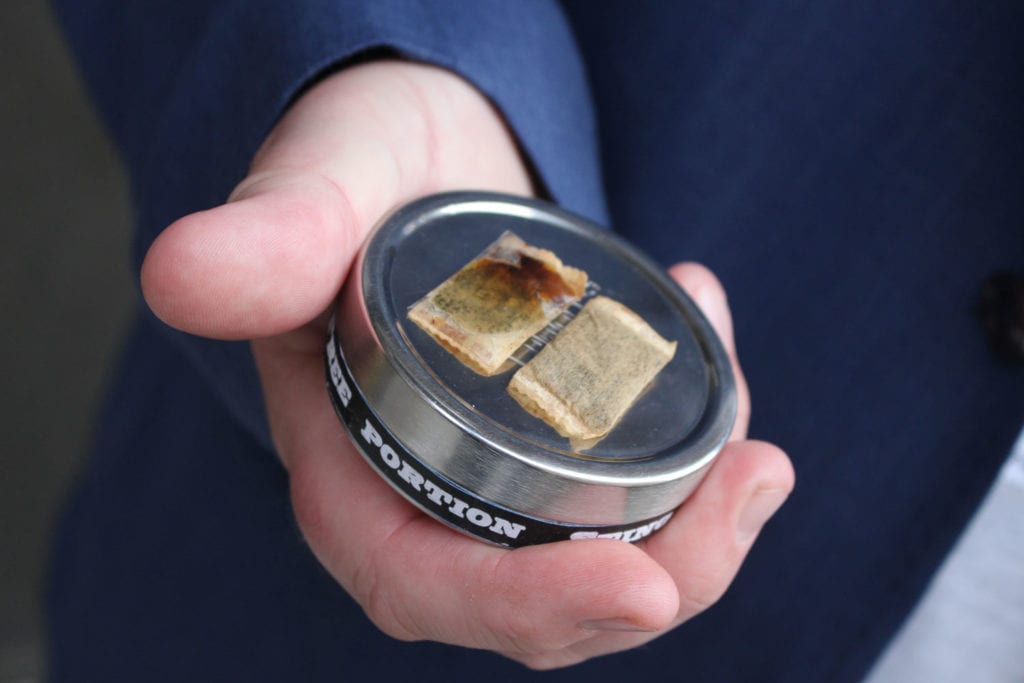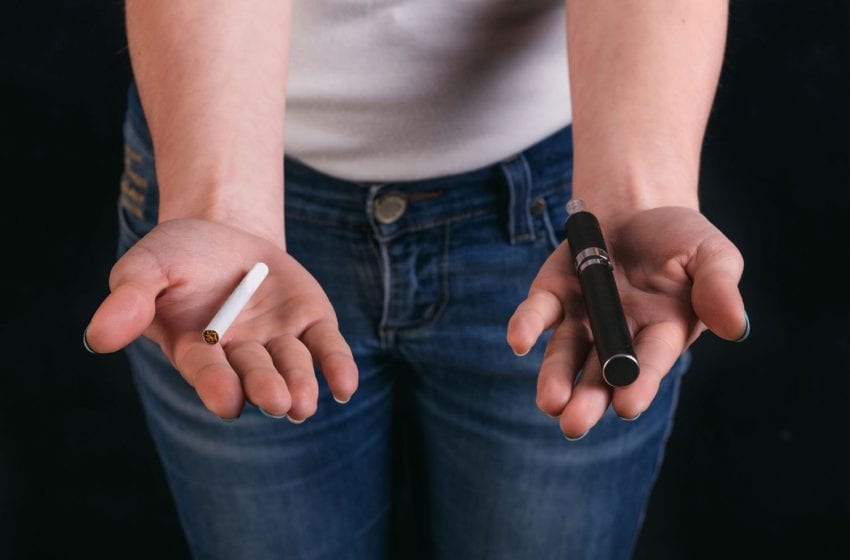
If England wants to achieve its target of reducing smoking incidence to 5 percent by 2030, it should debunk the myriad stories that are presenting vaping in an inaccurately negative light.
By George Gay
One figure in a recent report on smoking habits in the U.K. seemed to be of special note. According to the report, “Adult smoking habits in the U.K.: 2019”*, which was published on July 7 by the Office for National Statistics (ONS), 52.7 percent of Great Britain’s smokers say they intend (my emphasis) to quit smoking.
Only 52.7 percent? That is below the figures usually quoted in respect of the proportion of smokers who want to quit. For instance, according to the September 2018 edition of Public Health England’s (PHE) Health Matters, about 60 percent of England’s smokers wanted (my emphasis) to quit.
So these figures raise an interesting issue, assuming the numbers are correct and are reasonably comparable*. For one thing, it seems odd that something of the order of 7.3 percent of smokers want to give up but don’t intend to do so because that means more than half a million people are seemingly acting irrationally, even looked at from their own subjective point of view. I mean, if our actions are observed by others, we are probably all seen to be acting irrationally at one time or another, but it is quite another matter for an individual to knowingly act in what she regards to be an irrational manner.
There could, however, be another explanation for this phenomenon. It could be that roughly half a million smokers in Great Britain have decided that while they want to quit, they are so sure they cannot that they don’t intend to try. If these people are fatalist or determinists, so be it. But it is a different matter if they have been convinced that they cannot quit. And this could be the case. Some of those in tobacco control have seemingly done what they would consider to be an excellent job of convincing smokers that quitting is almost impossible.
But this, of course, is nonsense. The ONS report also says that “62.5 percent of those who have ever smoked [in Great Britain] said they had quit, based on our estimates from the Opinions and Lifestyle Survey.” Interestingly, the ONS report presents, too, a comparison with the equivalent figure for 1974, 26.7 percent, which perhaps casts doubt on the claim that manufacturers in recent years have rigged formulations to make cigarettes more addictive—whatever more addictive might mean.
In fact, you would have to doubt whether the 52.7 percent figure is meaningful. The report also says that 21.2 percent of smokers intend to quit within the next three months, so it has to be assumed the other 31.5 percent have put no time limit on their intentions. In this case, I would suggest that while the “intention” expressed by the 21.2 percent of smokers is akin to a student’s multi-colored study plan, the “intention” expressed by the 31.5 percent of smokers who are looking beyond three months is nothing more than a pipe dream.
Why it matters
This is important for the authorities because England has a target of reducing its incidence of smoking to 5 percent or lower by 2030. As of last year, the ONS reports, the incidence was down to 13.9 percent, so if the proportion of smokers in England falls during the next 11 years by the same amount as it fell between 2018 and 2019 in Great Britain (14.7 percent to 14.1 percent), the target is not going to be met.
The question is: Will the incidence fall by 0.6 of a percentage point year-on-year? In which case, it would drop to 7 percent to 8 percent by 2030. The ONS researchers referred to the 0.6 percentage point fall between 2018 and 2019 as “significant,” so it could be difficult to maintain such a fall every year given that it is probably reasonable to assume that the further the overall percentage falls, the more the smoker base will be reduced to a hard core. On the other hand, the further the overall percentage falls, the smaller the community of smokers will become, which raises the question of how long even committed smokers will continue with their habit once most of their acquaintances no longer join them outside the pub for a smoke.
And, of course, there is the million-dollar question around what effect the spread of Covid-19 has had and is having on the incidence of smoking. How many smokers are going to believe those who suggest that smoking and/or consuming tobacco or nicotine can help prevent the onset of the disease, and how many are going to worry that, as some claim, smoking and/or the consumption of tobacco or nicotine is likely to make their health outcomes worse if they do contract the disease?
But there is a billion-dollar question too. Are those intent on stopping smokers quitting their habit by switching to less risky tobacco or nicotine products going to continue to enjoy “success”? It has been said many times that the switch to vaping has stalled in the U.K., something that is strange because public health in the country has generally acted in a reasonably supportive way when it comes to vaping and its benefits. For instance, take this passage from Health Matters:
“There is a widespread misconception amongst smokers and health professionals that most of the harm of smoking comes from nicotine. This is perhaps the greatest obstacle we face as it leads to both nicotine-replacement therapy (NRT) and e-cigarettes being perceived as harmful, and as a result, smokers may not make a quit attempt using one of these routes.
Leading health organizations, including the Royal College of Physicians, Royal College of General Practitioners and the British Medical Association have all provided advice on the important role of e-cigarettes in helping smokers to quit.”
One of the issues that holds smokers back from switching to vaping is that smokers enjoy smoking and will clutch at any straws that help them, in good conscience, to continue with their habit, so if somebody comes along and casts doubt on the safety of consuming nicotine by other means, they will latch on to that doubt, no matter how ludicrous the ideas on which that doubt is based are. As is described in the accompanying piece, even though the lung injury saga of 2019 played out in the U.S. and involved a substance not permitted for vaping in the U.K., it probably damaged the cause of vaping in the U.K.
And there is no end to such tales. One story precis I saw recently claimed in its first sentence that “New research … shows that there are more unknown dangers associated with vaping.” What is written here makes no sense. More than what? And how do we who are not Donald Rumsfeld know that there are unknown dangers? In addition, the research seemed to assume that flavor molecules that attacked plastic would have the same effect on human tissue—somewhat akin to assuming that your stomach lining ends up looking like the inside of a teapot.
I cannot help thinking that if progress is to be made in reducing the U.K.’s smoking incidence in line with its 2030 target, organizations such as PHE should, as well as continuing their helpful work in trying to publicize the positive aspects of vaping, act quickly to debunk in the public sphere the myriad stories that are presenting vaping in an inaccurately negative light.
*The report’s figures come from two separate data sources, with those for the U.K. (England, Wales, Scotland and Northern Ireland) coming from the Annual Population Survey and those for Great Britain (England, Wales and Scotland) coming from the Opinion and Lifestyle Survey. I have taken the liberty of conflating some data in respect of Great Britain and England, and I have also conflated data that refers to adult smokers as being over the age of 16 and data referring to adult smokers as over 18. I have done this because it is the concepts behind the figures rather than the figures themselves that are of interest here.
Philip Morris’ progress toward a smoke-free England

It is now about three years since Philip Morris posed the question, Can Britain go smoke-free in the next 10 years? and Tobacco Reporter in July took the opportunity of this anniversary to ask Patrick Muttart, director of external affairs for the U.K. and Ireland at Philip Morris Limited, what progress had been made.
Tobacco Reporter: Part of the problem that Britain faced three years ago was that while vaping had helped a lot of people quit smoking, the switch from smoking to vaping had, for a number of reasons, stalled. Assuming that there has been some uptick in switching from smoking to the consumption of less-risky products, which products have been responsible for that uptick?
Philip Morris U.K.: Smoking prevalence rates are falling in the U.K. as more people either quit cigarettes altogether or switch to alternative products. Official figures from the ONS [Office for National Statistics] in July show that the proportion of current smokers in the U.K. has dropped from 14.7 percent in 2018 to 14.1 percent in 2019—continuing a downward trend since 2011. Central to this decline has been the role of smoke-free alternatives, such as e-cigarettes and heated-tobacco and more recently nicotine pouches.
In Great Britain, nearly 3 million people use an e-cigarette. Despite this, regular e-cigarette use has plateaued in recent years. A growing number of smokers in the U.K. mistakenly believe that vaping is equally or more harmful than smoking following the highly publicized reports in the U.S. of the lung injury outbreak in 2019. The substance identified as the primary cause of the outbreak in the U.S. is banned in regulated vaping products in the U.K. Nevertheless, these false fears have clearly affected smokers’ views towards vaping in the U.K. and come as the number of smokers who intend to quit continues to fall.
With product development and scientific substantiation working in lockstep together, tobacco manufacturers must therefore offer smoke-free alternatives that adult smokers can have confidence in. This will go some way in easing safety concerns, so smokers aren’t deterred from switching if they cannot quit altogether.
Philip Morris has invested significantly in its smokefree portfolio to offer products that are a better alternative to smoking and meet adult consumer preferences. IQOS, a heated-tobacco product, produces up to 95 percent less harmful chemicals* compared to cigarettes and by using real tobacco instead of liquid, delivers a more familiar and satisfying tobacco experience.
In the U.K., heated-tobacco volumes during the second quarter of 2020 increased more than five-fold over the prior year quarter, demonstrating the growing popularity in the category while underlining the huge role that tobacco-based smoke-free products can play in helping people switch to less harmful alternatives.
Do you think the U.S. Food and Drug Administration’s (FDA) authorization of the marketing in the U.S. of IQOS as a modified-risk tobacco product (MRTP) will help progress toward your smoke-free target in the U.K.?
The FDA’s authorization of the marketing of IQOS in the U.S. is an important milestone on our journey to becoming smoke-free. It marks the first time that [the] FDA has granted MRTP marketing orders for an innovative electronic alternative to cigarettes.
Following a multi-year review of PMI’s [Philip Morris International’s] evidence as well as a number of independent studies, the FDA decided that smokers who switch completely from conventional cigarettes to IQOS significantly reduce their exposure to harmful or potentially harmful chemicals in accordance with their interpretation of the U.S. law. Their authorization confirms that IQOS is distinctly different to cigarettes because it has been demonstrated to reduce exposure to harmful chemicals and that this information should be communicated to consumers to help guide their choice.
While the MRTP designation applies in the U.S., it is consistent with earlier conclusions of other leading regulatory and scientific bodies, including those in the U.K., which found that IQOS emits lower levels of harmful toxicants.
We believe that this latest decision by the FDA—and its previous decision to grant an oral tobacco alternative a modified-risk status—strengthens the argument for the U.K. to carefully review these next-generation tobacco-based alternatives, which have undergone comprehensive and robust scientific assessment. —G.G.
*Philip Morris points out that this does not necessarily equal a 95 percent reduction in risk. IQOS is not risk free.


























